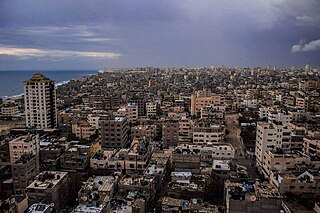
Khan Yunis, also spelled Khan Younis or Khan Yunus, is a Palestinian city serving as the capital of the Khan Yunis Governorate in the southern Gaza Strip. It has been largely destroyed on account of the ongoing Israel–Hamas war.
This page is a partial listing of incidents of violence in the Israeli-Palestinian conflict in 2004.
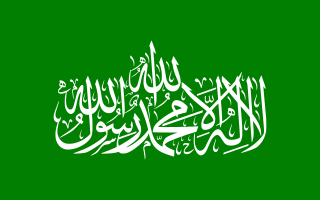
The Al-Qassam Brigades, also known as the Izz al-Din al-Qassam Brigades, named after Izz ad-Din al-Qassam, is the military wing of the Palestinian nationalist Sunni Islamist organization Hamas. Led by Mohammed Deif until his presumed death on 13 July 2024, the Al-Qassam Brigades is the largest and best-equipped militia operating within the Gaza Strip in recent years.

Yahya Ibrahim Hassan Sinwar was a Palestinian militant and politician who served as chairman of the Hamas Political Bureau from August 2024, and as the leader of Hamas in the Gaza Strip from February 2017, until his death in October 2024, succeeding Ismail Haniyeh in both roles.
The year 2023 in Israel was defined first by wide-scale protests against a proposed judicial reform, and then by the Hamas-led attack on Israel on October 7, which led to a war and to Israel invading the Gaza Strip.
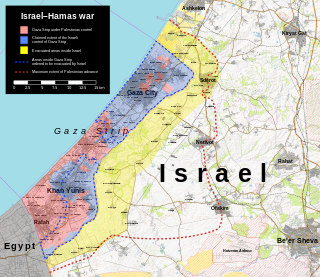
The Israeli invasion of the Gaza Strip is a major part of the Israel–Hamas war. Starting on 7 October 2023, immediately after the Hamas-led attacks on Israel, it began bombing the Gaza Strip; on 13 October, Israel began ground operations in Gaza, and on 27 October, a full-scale invasion was launched. Israel's campaign, called Operation Swords of Iron, has four stated goals: to destroy Hamas, to free the hostages, to ensure Gaza no longer poses a threat to Israel, and to return displaced residents of Northern Israel. More than 35,000 Palestinians have been killed in Gaza since the Israeli operation began, including more than 7,800 children and 4,900 women, with another 10,000 people missing and presumed dead under the rubble of destroyed buildings. There are allegations that Israel has committed war crimes and genocide during the invasion.
Events of the year 2024 in Israel.
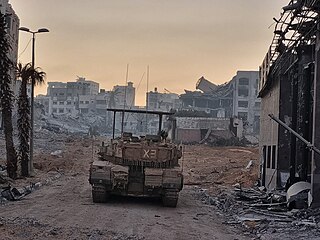
The battle of Khan Yunis, which evolved into the siege of Khan Yunis in late January, began on 1 December 2023 in the midst of the Israeli invasion of the Gaza Strip.
Events in 2024 in the Palestinian territories.
The following is a list of events during the Israeli–Palestinian conflict in 2024, including the events of the Israel–Hamas war.
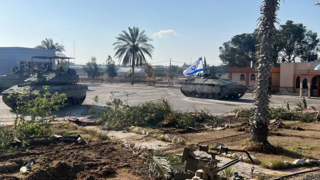
On 6 May 2024, Israel began a military offensive in and around the city of Rafah as part of its invasion of the Gaza Strip during the Israel–Hamas war.
The Hamad City incursion was a two–week Israeli military operation against Hamas forces in the apartment complex and neighborhood of Hamad City, Khan Yunis, in the Gaza Strip.
Hamad City or Hamad Town is an apartment complex and neighbourhood in northwestern Khan Yunis, a city in the Gaza Strip. Named after its benefactor, Hamad bin Khalifa Al Thani of Qatar, the complex was envisioned as a housing solution for middle to lower-income Palestinian families.
The second battle of Khan Yunis was a military engagement in the Gaza Strip that began on 22 July 2024 as part of the ongoing Israel–Hamas war. It marked the return of the Israel Defense Forces (IDF) to the Khan Yunis area inside the Gaza Strip after a previous battle and siege which lasted from December 2023 to April 2024 and ended with an Israeli withdrawal.
On 22 July 2024, Israel sent tanks and launched airstrikes on eastern Khan Yunis in the Gaza Strip. The Gaza Health Ministry reported that 73 Palestinians were killed by Israeli fire, while more than 270 were injured.





